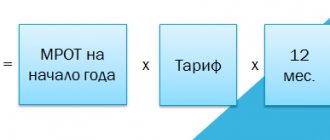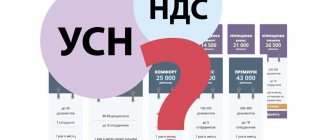Almost all large enterprises in our country that are involved in working with processed products (food, organic substances, food raw materials, etc.) have to face the problem of waste disposal. This is explained by the fact that even the most successful company involved in working with food raw materials has certain production costs. In some places the products were not sold out, in others the goods in the warehouse were damaged due to the negative influence of the climate. There can be a huge number of reasons, especially if we are talking about manufactured products with a limited shelf life.
Today our article is devoted to environmental collection, as one of the measures to solve this problem. Many companies are accustomed to the fact that with the help of this payment they can free themselves from the need to deal with recycling themselves. In fact, this is true. Let's talk about the legal basis of environmental collection, outline a list of problems that exist in this area, try to understand why it is not profitable for enterprises to dispose of waste on their own, and also give some traditional recommendations.
General information: environmental fee
Legal entities and individual entrepreneurs producing goods on the territory of Russia and importing goods from third countries or importing goods from EEC member states are required to ensure compliance with the recycling standards established by the Government of the Russian Federation. Manufacturers and importers of goods ensure the disposal of waste from the use of goods themselves by organizing infrastructure for the collection of such goods or by concluding agreements for the disposal of goods with third parties. This standard can be met during the disposal of not only waste generated from a specific product, but also from a group of similar products in accordance with the list of goods.
Environmental fee for manufacturers and importers of packaged goods
Paragraph two of the data clarifies the procedure for calculating and paying the environmental fee for packaging and packaged goods. According to the amendments, the environmental fee must be paid by manufacturers of goods and importers of goods who do not independently dispose of waste from the use of goods.
Payment of the environmental fee is carried out according to the following rules:
- for each product group
- for each product packaging group
Who should pay the environmental fee for packaging?
It must be paid either by the packaging manufacturers themselves, or by the suppliers who import this packaging into Russia.
If we are talking about a group of packaged goods that are not themselves ready for consumption, then an environmental fee is paid only for the packaging.
For which products and packaging do I need to pay an environmental tax?
To determine these groups of goods and packaging, it is necessary to rely on the order of the Government of the Russian Federation dated December 28, 2021 N 2970-r.
List of goods for disposal
The list of goods was approved by Order of the Government of the Russian Federation dated December 28, 2017 No. 2970-r (as amended on June 16, 2018) “On approval of the list of goods, packaging of goods subject to disposal after they have lost their consumer properties.” The order consists of sections:
Section I. Goods, with the exception of packaging of goods, subject to disposal after they have lost their consumer properties, including 46 different groups of goods. Section II. Packaging of goods subject to disposal after it has lost its consumer properties, including 8 packaging groups.
Waste disposal - the use of waste for the production of goods (products), performance of work, provision of services, including the reuse of waste, including the reuse of waste for its intended purpose (recycling), their return to the production cycle after appropriate preparation (regeneration), as well as extraction of useful components for their reuse (recovery).
Whether a product belongs to the list of goods subject to disposal is determined by its name (physical and chemical characteristics) according to OK 034-2014 (CPES 2008). A manufacturer or importer can join an association to implement these standards on the basis of an agreement if he does not want or cannot dispose of waste on his own. In the event of non-fulfillment or partial fulfillment by the association of obligations for waste disposal, which were transferred to it by the manufacturer, importer of goods, the obligations are recognized as not transferred to the extent of the obligations not fulfilled by the association, that is, if the association “under-utilized” waste, the manufacturer/importer will be to blame.
Order service
What is the difference between environmental fee and pollution fee?
The negative impact on the environment when disposing of waste is another payment that applies to legal entities and individual entrepreneurs whose work generates waste. This payment was introduced back in 2002, 7-FZ “On Environmental Protection”.
Environmental fees apply to firms that produce something. As a result of production (or processing), waste is generated that pollutes water bodies or the atmosphere with any chemical emissions. This means that this organization negatively affects our environment, for which it must pay. That is, if an organization uses a stationary facility (it does not matter whether this facility is owned or leased) and this facility pollutes the land, water or air, then it is obliged to pay for the harm that its activities cause. The law discusses in more detail the types of pollution, standard values and payment procedures in specific cases. Also in this category of payers there are beneficiaries - objects exempt from payment.
By the way!
Letter of Rosprirodnadzor dated January 26, 2017 No. AS-10-02-36/1417 “On sending information on the disposal of waste from the use of goods and packaging”: At the same time, it should be noted that in the conclusion between the manufacturer, importer of goods and the operator for handling municipal solid waste , regional operator or individual entrepreneur, legal entity engaged in the collection, transportation, processing, disposal of waste (except for municipal solid waste), contracts for the provision of waste disposal services, the parties independently, taking into account the requirements of environmental legislation, determine the terms of the form, subject and content of the agreement and after its conclusion undertake to fulfill the provisions provided for by the agreement in accordance with the Civil Code of the Russian Federation dated November 30, 1994 No. 51-FZ.
How to recycle?
The recycling obligation is considered fulfilled from the date of submission of reports confirming compliance with recycling standards or from the date of payment of the environmental fee. Waste disposal is confirmed by concluded agreements with third parties (when waste is transferred to them) and recycling acts. Letter of Rosprirodnadzor dated December 15, 2016 N AS-10-01-36/25460 introduced recommended forms of disposal acts.
Note!
Disposal of waste from the use of goods and packaging is a licensed type of activity if the waste is not classified as class V. Federal Law of June 24, 1998 N 89-FZ (as amended on December 25, 2018) “On production and consumption waste” Article 9. Licensing of activities for collection, transportation, processing, disposal, neutralization, disposal of waste of I – IV hazard classes 1. Licensing of activities for the collection, transportation, processing, disposal, neutralization, disposal of waste of hazard classes I - IV is carried out in accordance with the Federal Law of May 4, 2011 N 99-FZ “On licensing of certain types of activities”, taking into account the provisions of this Federal Law.
Product disposal standards
Recycling standards for each group of goods, group of packaging of goods are established as a percentage of the total quantity of goods released into circulation on the territory of the Russian Federation, expressed in units of mass or units of goods, or packaging of goods, expressed in units of mass of packaging. Manufacturers of packaging are not obliged to recycle it - packaging recycling is carried out by manufacturers of goods in this packaging. If recycling standards are exceeded, then the next year the standards are reduced by this difference. The standard may also be reduced if the packaging is made from recycled materials. Recycling standards are established for groups of goods as a percentage of the total number of released goods, taking into account economic and environmental conditions and are reviewed every 3 years.
Applicants can submit reports in one of three ways:
- Using the free resource user reporting tool “Nature User Module”, posted on the official website of Rosprirodnadzor on the Internet information and telecommunications network;
- Using the “Personal Account” of the natural resource user located on the Internet information and telecommunications network;
- Using other software, if the requirements for the format published on the official website of Rosprirodnadzor are met.
What reporting must be submitted by manufacturers and importers of goods?
All reporting that must be submitted to manufacturers and importers of goods:
- Declaration of the quantity of goods produced and packaging. The declaration is submitted annually, before April 1 of the year following the reporting period;
- Reporting on compliance with waste disposal standards for these products and packaging. Reporting is submitted annually, before April 1 of the year following the reporting period;
- In case of non-compliance with the standards, the amount of the environmental fee is calculated and its payment.
The declaration on released goods and packaging is drawn up in accordance with the Regulations on the declaration by manufacturers and importers of goods subject to disposal of the quantity of finished goods released into circulation on the territory of the Russian Federation during the previous calendar year, including packaging, approved by the Decree of the Government of the Russian Federation dated December 24, 2015 N 1417.
If a product is produced in the Russian Federation and exported, it is not indicated in the declaration. Manufacturers of goods include information about goods in the declaration based on primary accounting documents. Importers of goods - on the basis of customs documents. The declaration is filled out for each product name, the quantity is indicated in kilograms. If you registered a legal entity (or individual entrepreneur) during the year, then the declaration is filled out from the date of registration until the end of the year. At the same time, Rosprirodnadzor may request, during the verification of the authenticity of the declaration, certified copies of the documents on the basis of which it was compiled. The declaration is submitted by April of the year following the reporting year.
How to calculate the environmental tax for 2021 (for payment in 2021)
Formula for calculating the fee amount:
| ES | = | M | X | N | X | WITH |
The formula has the following values:
- M is the mass of recyclable goods that were put into circulation on the territory of the Russian Federation in 2021;
- N – recycling standard in accordance with the order of the Government of the Russian Federation dated December 4, 2015 No. 2491-r;
- C – fee rate according to Decree of the Government of the Russian Federation dated 04/09/2016 No. 284.
Procedure, forms and deadlines for submitting environmental reporting
The procedure, forms and deadlines for submitting reports on compliance with recycling standards are established on the basis of Decree of the Government of the Russian Federation of December 8, 2015 N 1342 (as amended on October 17, 2018) “On approval of the Rules for the submission by manufacturers of goods, importers of goods of reporting on compliance with standards for recycling waste from the use of goods " Disposal reporting is submitted by April 1 for the past year.
Reporting, like declarations, is submitted by manufacturers of goods to the territorial office of Rosprirodnadzor, and by importers to the central office of Rosprirodnadzor. As supporting documents, Rosprirodnadzor has the right to request copies of agreements between the manufacturer and the third party that disposed of its waste or, if the manufacturer disposes of waste independently, copies of disposal acts. An agreement can be concluded not only with the operator and regional operator, but also with an individual entrepreneur or legal entity engaged in the collection, transportation, processing, and disposal of waste (with the exception of municipal solid waste).
Deadline for payment of environmental fees in 2018
The deadline for paying the environmental fee for 2021 in 2021 is April 15, 2021. Here is a sample payment order. It can be found on the Rosprirodnadzor website,
Payment of the environmental fee must be transferred to:
- according to the details of the Federal Service for Supervision of Natural Resources (Central Office of the Service) - importers and manufacturers-importers;
- according to the details of the territorial service bodies - manufacturers.
Details of the Central Office of Rosprirodnadzor
- Legal address: 123995, Moscow, st. B. Gruzinskaya, 4/6 building A; B
- OKPO code: 00083428
- Chief manager: 048
- OKTMO: 45380000
- INN: 7703381225
- Gearbox: 770301001
- OGRN: 1047703033300
- OKOPF: 81
- OKVED: 75.11
- Personal account name: Administrator
- Personal account number: 04951000480
- Current account number: 40101810500000001901
- Bank of organization: Operations Department of the Bank of Russia, Moscow 701
- BIC: 044501002
How to report for environmental fees?
In January 2021, the Ministry of Natural Resources issued a letter explaining the issue of reporting and payment of fees for 2021. This letter stated, in particular, […] Reporting, declaration and calculation of the amount of environmental fees (in case of failure to achieve recycling standards) in 2021 were submitted for the 2017 reporting year (using recycling standards established for 2017 by order of the Government of the Russian Federation December 4, 2015 N 2491-r). When submitting a declaration in 2021 for the reporting year 2018, it indicates the number of goods released into circulation on the territory of the Russian Federation, packaging of goods sold for domestic consumption on the territory of the Russian Federation for 2021. In 2021, for the reporting year 2021, reporting is compiled based on data on the number of goods released into circulation on the territory of the Russian Federation, packaging of goods sold for domestic consumption on the territory of the Russian Federation for 2021, and recycling standards established for 2018 by Decree N 2971- R. In 2021, for the reporting year 2021, the calculation of the amount of the environmental fee is formed on the basis of data on the number of goods released into circulation on the territory of the Russian Federation, packaging of goods sold for domestic consumption on the territory of the Russian Federation for 2021, using recycling standards established for 2021 Decree No. 2971-r, and environmental fee rates approved by Resolution No. 284 (as amended by Decree of the Government of the Russian Federation of October 31, 2021 No. 1293). We note that the new approach to using in reporting and in calculating the amount of environmental collection of data on goods (packaging of goods), released into circulation on the territory of the Russian Federation, goods sold for domestic consumption on the territory of the Russian Federation for the year preceding the reporting period, has been applied since the reporting period for 2021. To calculate the amount of the environmental fee for both 2021 and 2021, use the same values of the mass of goods, the mass of packaging of goods put into circulation on the territory of the Russian Federation, sold for domestic consumption on the territory of the Russian Federation for 2021, and payment of environmental fees for 2021 do not relieve manufacturers of goods and importers of goods from the obligation to pay an environmental fee for 2021 in 2021 if they fail to comply with recycling standards during 2018. Thus, when preparing reports by manufacturers and importers of goods, associations for the 2018 reporting year, as well as calculating the amount of environmental fees (in case of failure to achieve recycling standards), it is necessary to use data from the declaration for 2021 and recycling standards for 2018 established by Order N 2971- R. […]
The letter dated 02/22/2019 confirmed this interpretation of the provisions of the regulations:
[…] In accordance with paragraph 9 of Decree No. 1417 and paragraph 9 of Regulation No. 1342, the reporting period for submitting declarations and reporting is recognized as a calendar year. Based on clause 5 of Article 2 of the Federal Law of June 3, 2011 No. 107 “On the Calculation of Time,” a calendar year is considered to be the period of time from January 1 to December 31, lasting three hundred sixty-five or three hundred sixty-six (leap year) calendar days. According to paragraph 10 of Resolution No. 1417, the declaration is submitted annually, before April 1 of the year following the reporting period. The rules for collecting environmental fees were approved by Decree of the Government of the Russian Federation dated October 8, 2015 No. 1073 “On the procedure for collecting environmental fees.” Thus, in 2021, importers and manufacturers of goods, reporting for 2021, indicate in the declaration, reporting, and calculation of the environmental fee the number of goods released into circulation on the territory of the Russian Federation in 2017, applying waste disposal standards from the use of goods in 2021, established by the order Government of the Russian Federation dated December 28, 2017 No. 2971-r.
Thus, due to the “new approach” to reporting, it was not entirely clear how to report in April 2021. If the manufacturer/importer reported last April for goods produced in 2021 and waste from them disposed of in the same 2017, does this mean that they will have to take these indicators into account again and pay twice for the same thing? As of April 2019, we were waiting for additional clarification on this issue from Rosprirodnadzor or the Ministry of Natural Resources.
How do they avoid paying the fee?
It is clear that not everyone will want to pay such an impressive amount, especially if the company’s production volumes amount to not one, but hundreds of tons of finished products per year.
Unscrupulous entrepreneurs have not come up with anything better than, in fact, transporting waste to places suitable and not suitable for this purpose. To ensure that the inspection authorities do not have any unnecessary questions, “on paper” everything goes clean. For example, an organization that does not want to pay an environmental fee negotiates with a friendly recycling company, pays a certain amount of money that does not exceed the cost of collection, and takes the garbage somewhere out of sight. Now, of course, this has become less, but in the 90s the scale of unauthorized waste dumping had a detrimental effect on the ecology of the entire country. Just remember the story of Lake Baikal, when the coastal areas of the world's largest freshwater lake were littered with toxic waste.
At the same time, one should not confuse an environmental fee with a fee for a negative impact on the environment - this is a separate item of expenditure for an organization and everything is now more or less regulated in our country.
Environmental fee: calculation of the amount
If recycling standards are not met or not fully met, you need to calculate the amount of the environmental fee and submit the calculation to Rosprirodnadzor before April 15 of the year following the reporting year. The environmental fee refers to non-tax revenues of the federal budget. For packaging, it is paid by the manufacturer of the product in the package, and if the product is not ready for consumption, then the fee is paid only for packaging. Collection rates are established by Decree of the Government of the Russian Federation dated 04/09/2016 N 284 “On establishing collection rates for each group of goods, group of packaging of goods, waste from the use of which is subject to disposal, paid by manufacturers of goods, importers of goods who do not ensure independent disposal of waste from the use of goods (environmental fee).” Rates are set in rubles per ton of waste and are formed for each group of goods and packaging, varying from 2025 rubles / ton of lead batteries (“Group N 38”) to 33,476 rubles / ton for Group N 37 “Primary elements and batteries of primary elements” and Groups N 39 “Rechargeable batteries”
According to Parts 5 and 6 of Article 24.5 of Federal Law No. 7-FZ: 5. The environmental fee rate is based on the average cost of collection, transportation, processing and disposal of a single product or unit of mass of a product that has lost its consumer properties. The environmental fee rate may include the specific cost of creating infrastructure facilities intended for these purposes. Environmental tax rates for each group of goods, group of packaging of goods, waste from the use of which are subject to disposal, are established by the Government of the Russian Federation. 6. The environmental fee is calculated by multiplying the environmental fee rate by the weight of the product or by the number of units of the product (depending on the type of product) or by the weight of the product packaging put into circulation on the territory of the Russian Federation, and by the recycling standard expressed in relative units.
The procedure for collecting environmental fees is established by the Government of the Russian Federation through Resolution No. 1073 dated October 8, 2015 (as amended on August 23, 2018) “On the procedure for collecting environmental fees.” Order of Rosprirodnadzor dated August 22, 2016 N 488 approved the form for calculating the amount of environmental fees. This form includes:
Section 1. General information about the manufacturer, importer of finished goods, including packaging of such goods Section 2. Calculation of the amount of environmental fees
When calculating the fee, an indicator of the number of goods (finished goods/packaging) put into circulation on the territory of the Russian Federation is used, which must be taken from the declaration on the number of finished goods put into circulation on the territory of the Russian Federation for the previous calendar year, including packaging, subject to disposal. The total quantity to be disposed of is included in the calculation in accordance with the specified quantity from the reporting on compliance with waste disposal standards from the use of goods subject to disposal after they have lost their consumer properties. The amount of the environmental fee for finished goods and the amount of the fee for packaging are determined by summing the values for groups of goods, including packaging, subject to disposal. The total amount is determined by summing the amount of the fee for finished goods and the amount of the fee for packaging.
If the product is packaged in packaging produced by a third-party organization, you need to request information about its production and composition at the stage of declaring the quantity of goods in order to find out what proportion of the packaging is recycled materials, which will allow you to use a reduction factor in the calculation.
The following documents are attached to the completed form for calculating the environmental fee: a) copies of payment documents confirming payment of the environmental fee; b) a document confirming the authority of the payer’s representative to carry out actions on behalf of the payer.
Who is the payment administrator?
The payment administrator is Rosprirodnadzor. The amount can be calculated using software or on paper. The date of submission of the calculation of the amount of the environmental fee in electronic form is considered to be the date of its sending via the Internet to Rosprirodnadzor; on paper, the date is considered to be the mark of Rosprirodnadzor on its receipt indicating the date stamped on paper, or the date of mailing. The payment administrator can draw up an act of monitoring the correctness of calculation of the amount of the environmental fee, the completeness and timeliness of its payment when these facts are identified. The act is sent to the payer within 3 days, but the payer can, within 10 days, send to the administrator copies of documents confirming the validity of the calculation, payment of the fee, as well as explanations of the reasons for the discrepancy in the information provided by the payer.
15(3). The control report indicates:
a) facts of errors made when performing calculations and contradictions (inconsistencies) between the information contained in the calculation of the amount of the environmental fee and the information available to the administrator of the environmental fee and (or) received by him in the prescribed manner when declaring goods and packaging of goods, when reporting on standards and when monitoring compliance with established recycling standards, as well as federal state environmental supervision;
b) facts of non-payment, incomplete payment or untimely payment of the environmental fee;
c) the fact of overestimation of the amount of calculated and (or) paid environmental fees;
d) the requirement to submit to the administrator of the environmental fee, within 10 working days from the date of receipt of such a requirement, reasonable explanations regarding the calculation of the amount of the environmental fee, and (or) making corrections to it to eliminate the facts specified in subparagraph “a” of this paragraph, by introducing changes in the calculation of the amount of the environmental fee, which are re-sent to the administrator of the environmental fee, and (or) repayment of debt on the environmental fee if the facts specified in subparagraph “b” of this paragraph are revealed.
If the payer cannot justify the correctness of the calculations, the amount of the fee may be recovered in court. In addition, it is possible to credit the collection amounts to future payments or return the fee upon application after drawing up a report of a joint reconciliation of the calculations of the amount of the environmental fee. The application can be submitted by the payer or his representative to the administrator within 3 years from the date of the last payment (collection) of the environmental fee, attaching the following documents:
a) allowing to determine the payment (collection) of an environmental fee in an amount that exceeds the amount of the environmental fee subject to payment, as well as erroneous payment (collection) of an environmental fee;
b) confirming the authority of the person who signed the application or a certified copy of the specified document;
c) confirming the authority to carry out actions on behalf of the payer, if the application specified in paragraph 19 of these Rules is submitted by a representative of the payer.
In case of non-payment, partial payment of the fee and (or) failure to submit a calculation of the amount of the fee by the payer within the established time frame, the administrator sends the payer a request for voluntary repayment of the debt and submission of a calculation of the amount of the environmental fee, 15 days are allotted for this, after which collection begins in court .
Environmental fee: Where are the funds sent?
Funds received in the form of a fee are used to implement state programs in the form of subsidies for the activities of regional waste management programs. Moreover, priority subsidies are spent on recycling within the framework of regional programs of the same waste that is not disposed of by manufacturers/importers and for which a fee has been paid; secondly, funding is allocated to the construction and reconstruction of waste treatment and disposal facilities.
According to the explanations of the developers who prepared by-laws in this area, in just 2 years of payment of the fee it will be possible to build 24 sorting complexes and 831 technological lines for waste processing, 261 processing complexes for waste reuse, 507 waste collection and collection points.
Subject to the actual implementation of such a financial instrument, the state could quickly update waste disposal and treatment facilities, as well as reduce the number of landfills and waste disposal sites, introduce separate collection, etc. Unfortunately, at the moment in the Russian Federation only 7–8% of waste is sent for recycling or neutralization, the rest is either disposed of in landfills or stored in illegal dumps.
Consult Now
What it is
An environmental fee is one of the types of deductions paid by a company that is unable or unwilling to independently dispose of damaged products. In theory, each organization should autonomously get rid of illiquid goods, burn them at landfills, use industrial recycling equipment, etc. However, not everyone likes this idea. The fact is that self-disposal is not only a big hassle, material costs for transporting products, paying remuneration to those who take part in this undertaking, but also an unregulated legal framework on this issue.
Those companies that pay environmental fees are well familiar with this small list of legal acts:
- Resolution No. 2491 of December 1, 2015 (standards);
- Government Decree No. 284 of April 9, 2021 (rate);
- Government Order No. 1886 dated September 24, 2015.
Despite the fact that these documents regulate a number of issues, such as recycling standards, the cost of processing various types of waste per ton, deadlines for payment of environmental fees, etc., several of the most important issues are not resolved:
- How can an organization independently dispose of waste?
- How exactly can this be done?
- Do I need special permits or licenses for self-disposal?
A couple of years ago, the Government explained that the environmental fee performs two functions at once. The first is to compensate the state for the destruction of production waste. The second is to persuade enterprises to engage in recycling themselves. But it turns out that the state partly “profits” from companies when it does not work out the “standards” and at the same time increases contribution rates from year to year? It looks very strange.
In theory, recycling production waste should look like this. Isn’t it easier to pay the environmental fee when the cost of re-equipment can reach tens of millions of rubles?..



![My business [CPS] RU](https://nvvku.ru/wp-content/uploads/moe-delo-cps-ru-330x140.jpg)

